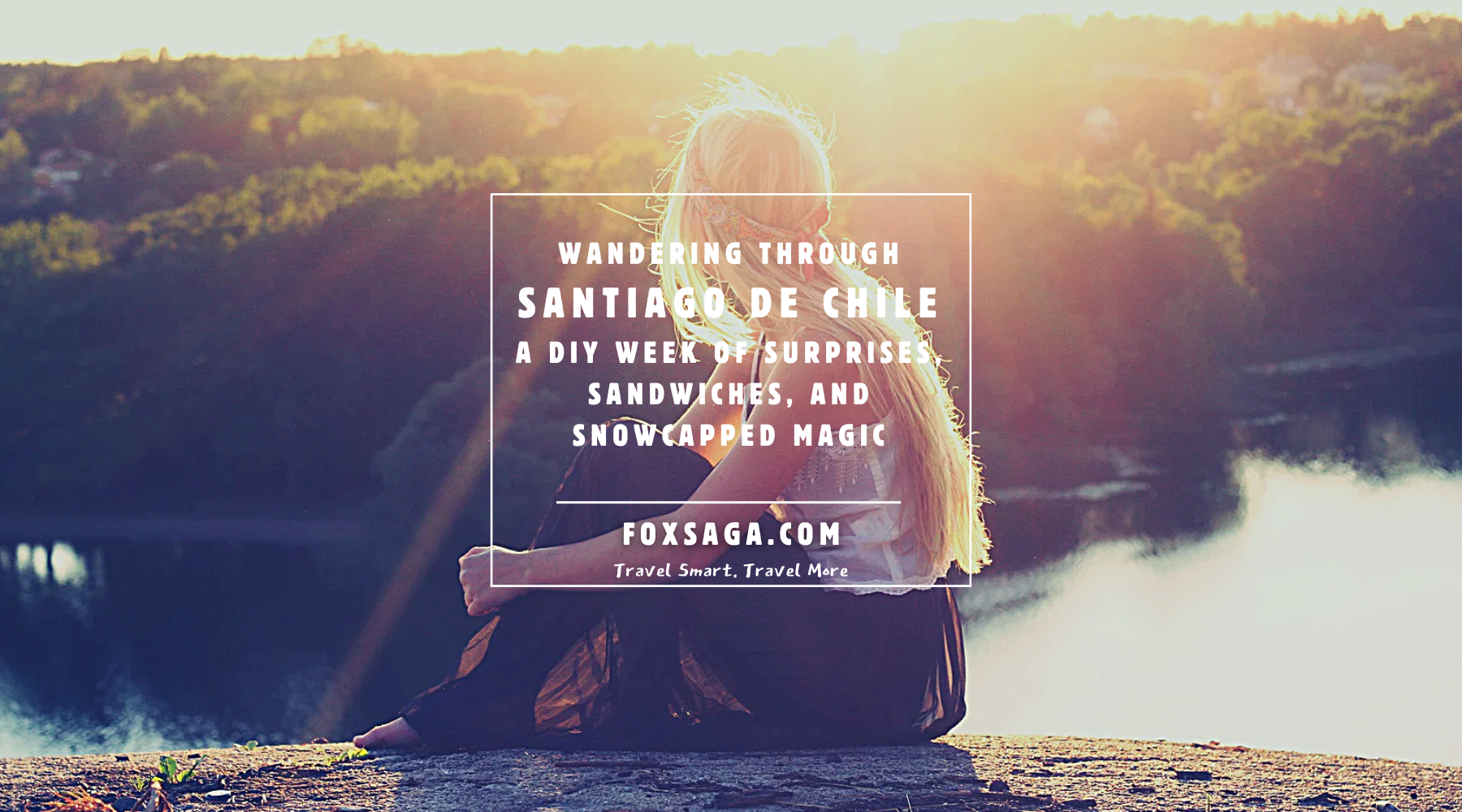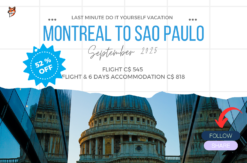There’s something deeply satisfying about planning your own trip—the thrill of clicking “book now” on a flight deal so good it feels almost illegal, the deep dive into Google Maps rabbit holes, and the smug satisfaction of skipping the travel agent’s “curated packages.” That’s exactly how a week in Santiago de Chile began: with a last-minute steal on flights, a well-reviewed hotel downtown, and nothing but curiosity in the backpack.
Landing in Santiago, the Andes greet you like stoic old guardians—massive, calm, and unbothered by your jetlag. The city itself? A delightful mix of classic colonial architecture, brutalist concrete blocks, unexpected palm trees, and murals that seem to shout at you in color. The hotel, tucked comfortably in the downtown core, is clean, friendly, breakfast-included (hallelujah), and within walking distance of many must-sees. DIY travel doesn't mean sacrificing comfort—it just means you chose it yourself and probably paid half the price.
The first thing any decent wanderer does in a new city? Walk. No schedule. No mission. Just vibes. Santiago rewards this instantly. Meander through Plaza de Armas where street performers, local artists, and shoe shiners paint the kind of chaotic-but-cozy picture that tells you, “yes, you’re somewhere new now.” Detour into the Museo Histórico Nacional—it’s free, beautifully curated, and filled with enough cool old stuff to satisfy even the casual history nerd.
From there, the hills start calling. Specifically, Cerro Santa Lucía, a lush hilltop park that offers panoramic views of the city and looks like it was designed by someone who really liked spiral staircases. Bring water. And maybe a snack. Speaking of which...
Santiago’s food scene is a weird and wonderful beast. It doesn’t try to be Instagram-perfect. It just tastes good. Lunch is often dominated by the almuerzo—a set menu at local restaurants that includes a starter, main, drink, and sometimes even dessert, all for around 6,000 CLP ($9 CAD). You’ll quickly fall for pastel de choclo, a corn pie with meat, olives, and egg that sounds odd but tastes like comfort. Or the mighty lomito completo, a pork sandwich stacked with avocado, tomato, and mayo in quantities that should be illegal—but aren’t, thankfully.
For caffeine and chill, make your way to the Barrio Lastarria. This artsy, slightly boho district is all leafy streets, independent bookstores, wine bars, and stylish cafés where you can sit, sip, and eavesdrop on conversations you don’t understand but pretend to. This area also happens to be near the Museo de Bellas Artes—drop in and let your eyes have a little feast. Entry is often free or super cheap.
One of the unexpected joys of Santiago is how easy it is to escape it. On a whim, hop on the metro to Baquedano, then grab a bus or join a tiny tour to the Cajón del Maipo—a canyon flanked by dramatic mountains, hot springs, and endless Instagrammable moments (if that’s your thing). It feels like you're in Patagonia, except you're back in time for dinner.
And what’s for dinner? La Piojera. It’s a Santiago institution that feels part dive bar, part wild fever dream. Order a terremoto—a wildly potent cocktail made with pipeño wine, pineapple ice cream, and enough sugar to stun a moose. It's sweet. It's dangerous. It's tradition. Pair that with some chorillana (think loaded fries on steroids), and you're basically Chilean now.
When the sun goes down, Santiago doesn’t tuck you in early. The nightlife is eclectic, from craft beer bars in Barrio Italia to rooftop lounges with mountain views and DJs playing a blend of Latin beats and electronic magic. People here really dance. And they don’t stop at midnight. Be warned: you’ll need a disco nap or three to keep up.
And no visit to Santiago is complete without riding the funicular up Cerro San Cristóbal. It’s touristy, yes, but even DIY travelers should make peace with the popular stuff if it’s worth it—and this one is. At the top? The Virgin Mary statue, incredible views, and the kind of fresh air that makes you feel like your lungs just hit the reset button. On the way down, reward yourself with a mote con huesillo—a strange Chilean drink-dessert hybrid with dried peaches and barley that tastes better than it sounds. Or looks.
Shopping isn't the star of this trip, but if you crave a quirky souvenir, Pueblito Los Dominicos is a good bet—a village-style market where local artisans sell everything from copper jewelry to woven alpaca goods. Bonus: it doesn’t feel like a tourist trap, and the vendors are refreshingly chill.
So what does a day in Santiago cost, excluding flight and lodging?
-
Meals: Breakfast’s on the hotel. Lunch at a local eatery? $9 CAD. Dinner with drinks? Around $15–20 CAD if you're feeling fancy.
-
Transportation: Metro rides are about $1 CAD a pop.
-
Attractions: Many museums and parks are free or under $5 CAD.
-
Snacks, coffee, and little indulgences: Let’s say another $10 CAD.
In total, you’re looking at a DIY budget of around $35–40 CAD per day—and that includes eating well, going places, and living your best wanderer life.
Santiago de Chile isn’t loud about its charms. It won’t throw itself at you with flashy lights or shouty tourism boards. Instead, it opens up slowly—one mural, one mountaintop, one terremoto at a time. You end up doing more than you planned, spending less than you feared, and falling harder than you expected.
And when you fly home—slightly sunburned, still full from that last almuerzo, maybe with a bottle of Carménère clinking in your bag—you’ll realize something: the best adventures are the ones you build yourself, step by delicious step.





